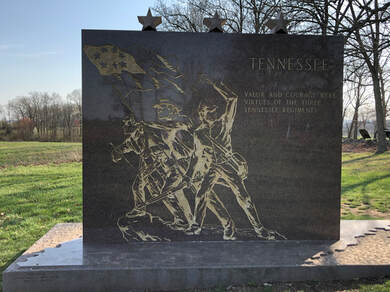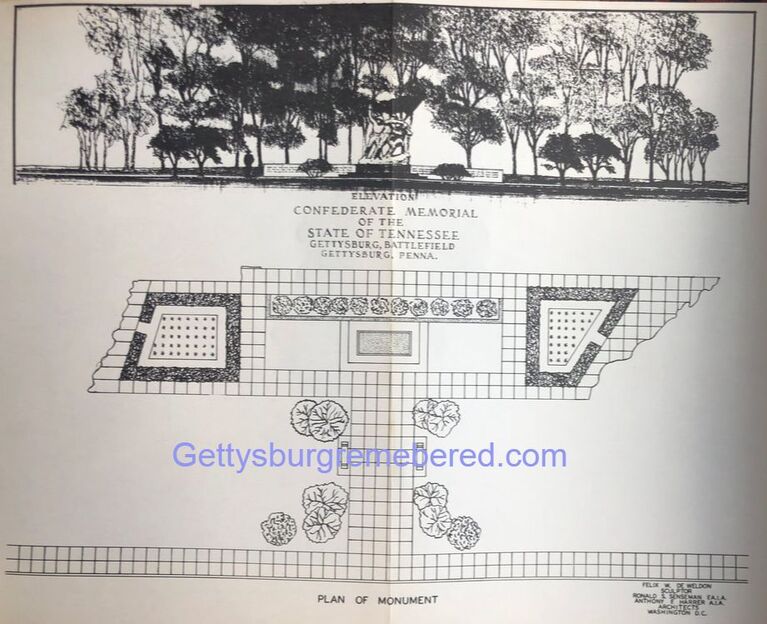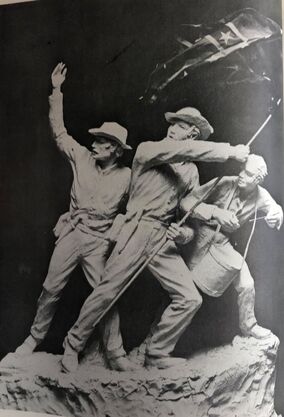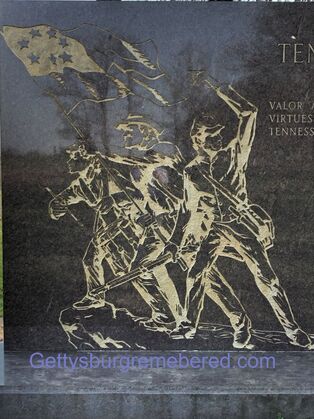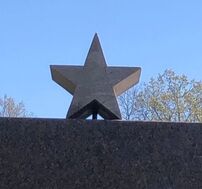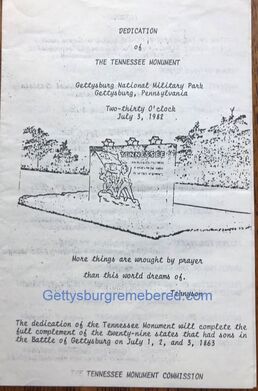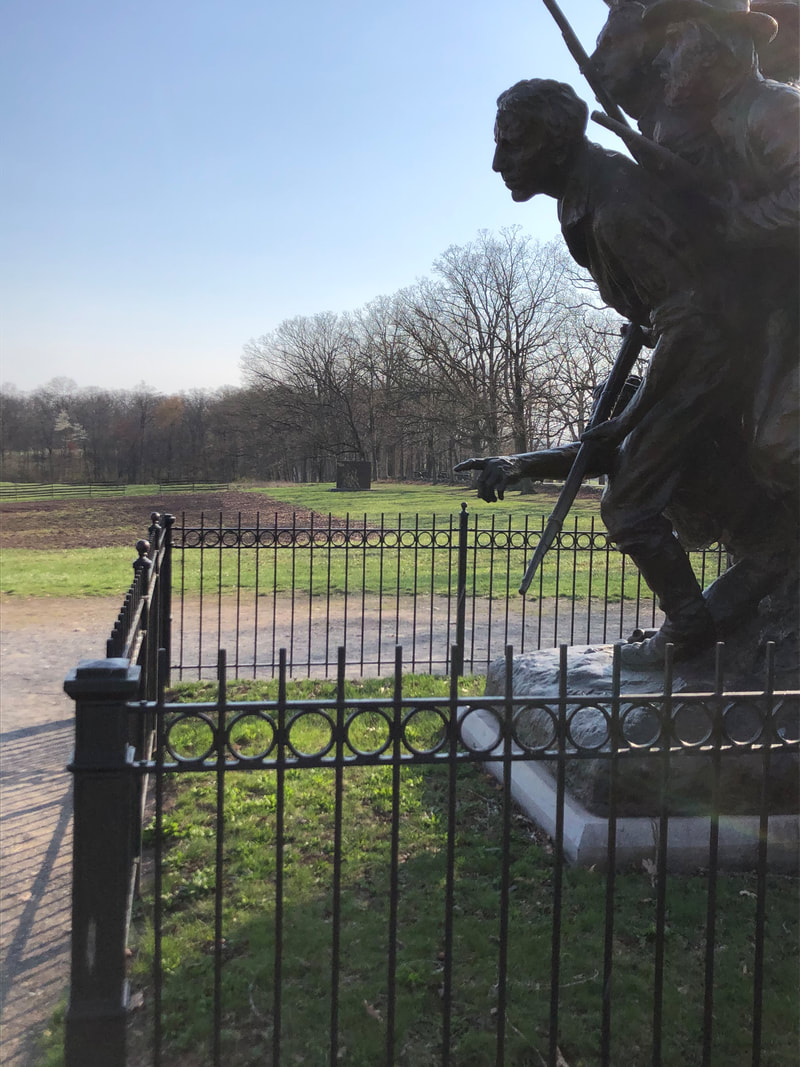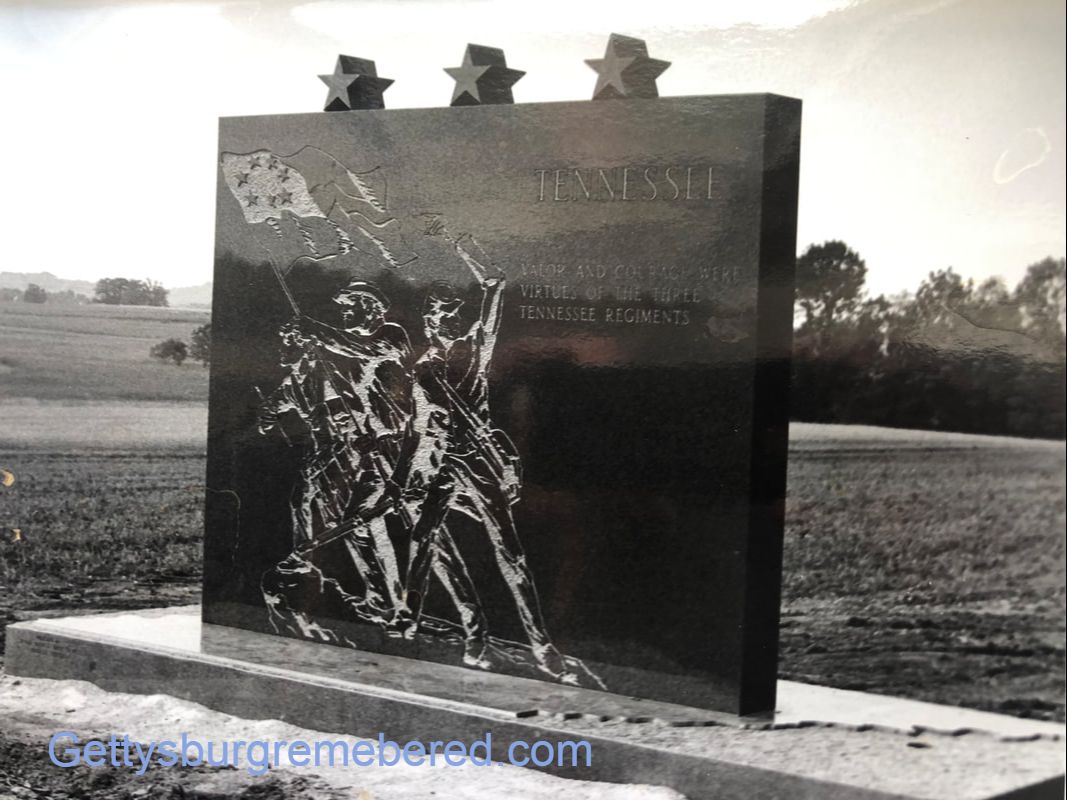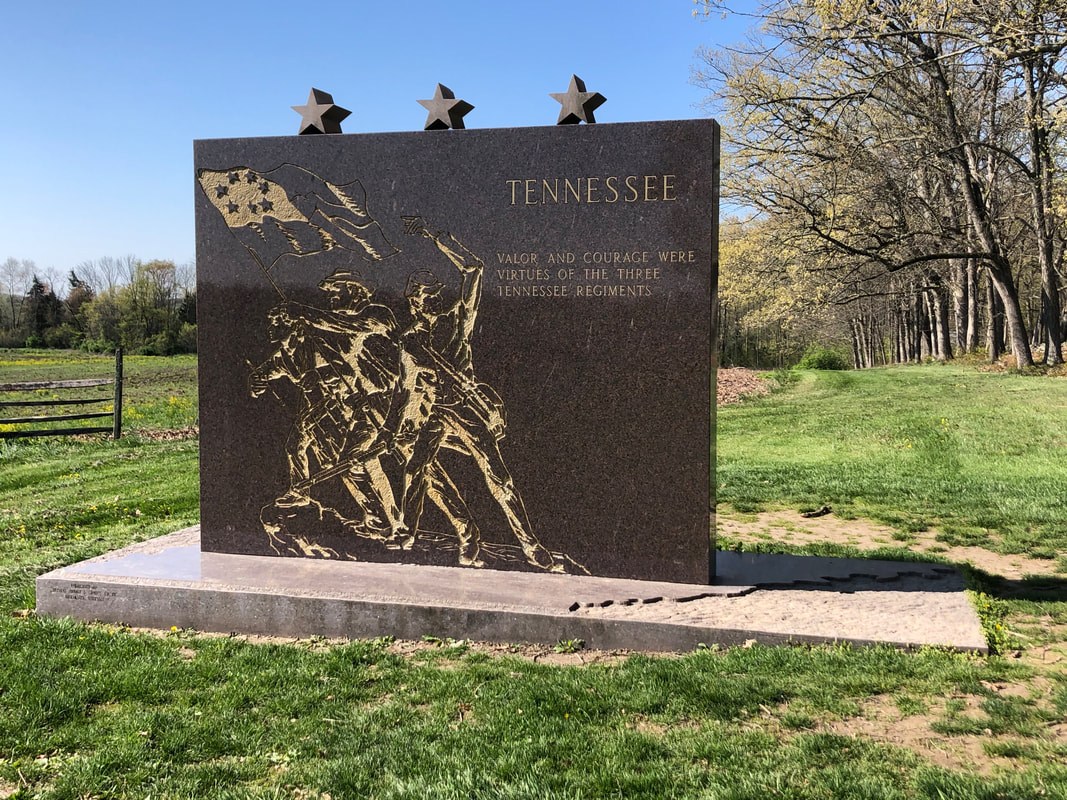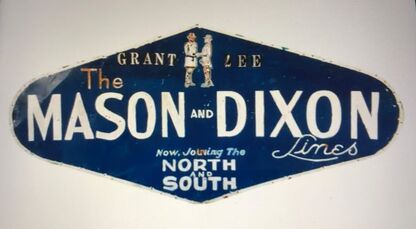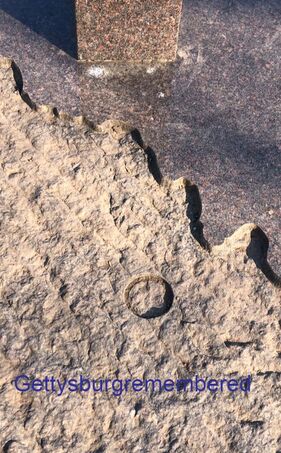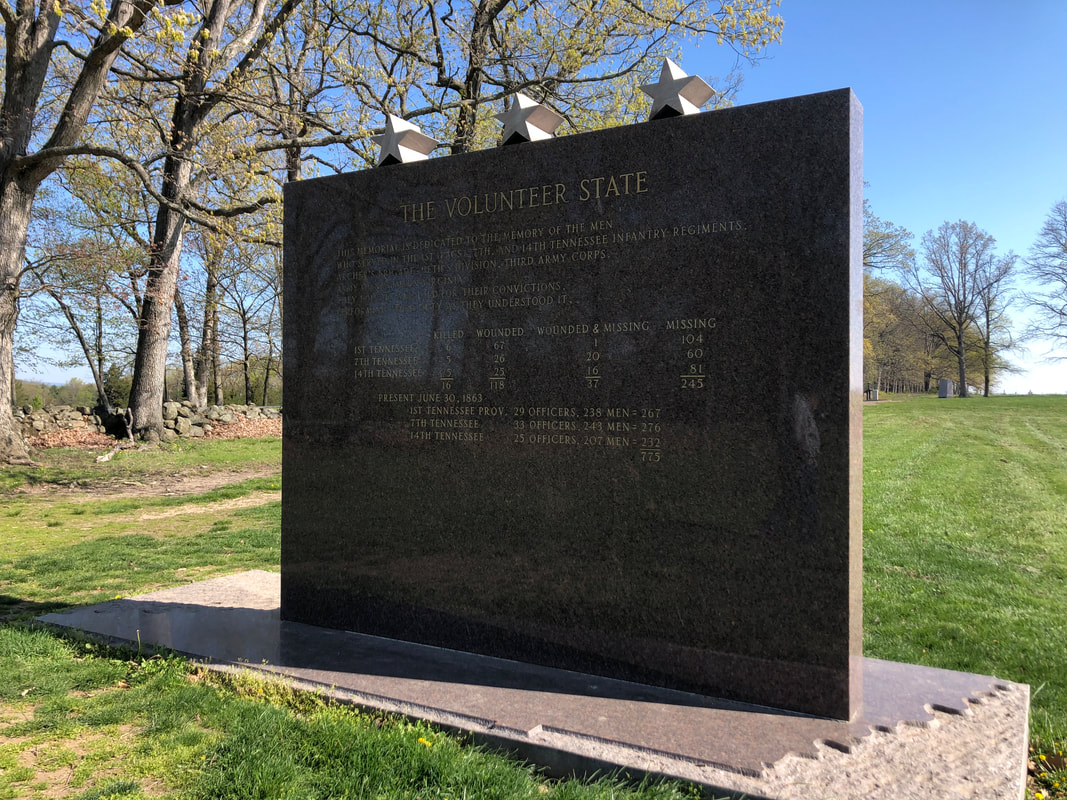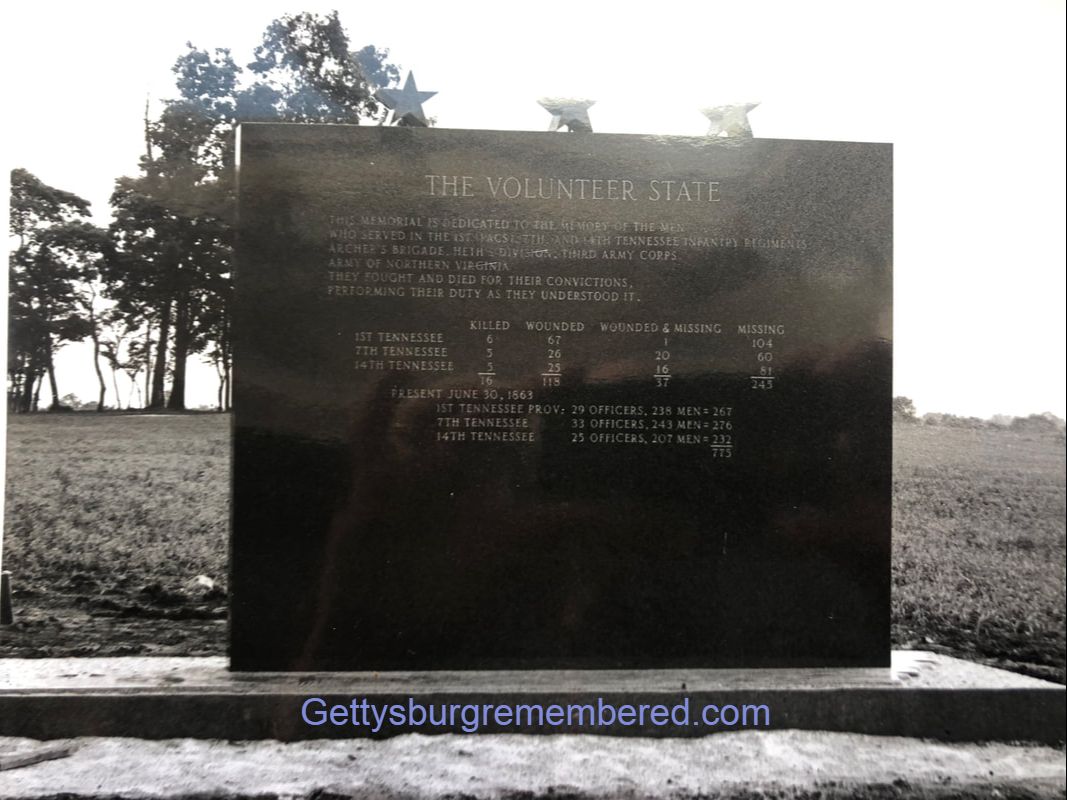The Tennessee State Memorial dedicated at Gettysburg Pa. July 3, 1982
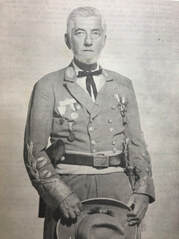 Gen. Donald A. Ramsay Commander-in-Chief Confederate High Command, Dept. of War Memorials state of Tennessee.
Gen. Donald A. Ramsay Commander-in-Chief Confederate High Command, Dept. of War Memorials state of Tennessee.
As the story goes, a Civil War Centennial reenactment was being held in July, 1963 at Gettysburg Pennsylvania. Thousands of reenactors and visitors came to Gettysburg to celebrate the 100th anniversary of the battle. Donald Ramsay the commander of the Tennessee contingent of reenactors attending the event was alarmed to find that Tennessee did not have a state memorial at Gettysburg. And with the state of Texas near completion of their memorial, Tennessee would be the only southern state without a memorial at Gettysburg. With these findings, Ramsay issued an on the spot order. "Upon the return to Nashville, we will begin negotiations in order to fund a State monument on this hallowed ground honoring those who fought here for their beliefs and convictions."
Ramsay would form a committee known as the Confederate High Command Department of War Memorials to review the idea of a state memorial at Gettysburg. Seeking support, the committee would meet with Governor, Frank Clement where he indicated "I will do anything I can to help". On December 29, 1965 the State of Tennessee would grant a charter of incorporation to the committee giving them official status.
The committee would would meet and ask for the endorsement of many political and private individuals to build a coalition of supporters. It would not be until February 26, 1968 when then Governor Buford Ellington would sign Senate Joint Resolution #69. This resolution was to direct "the State Building Commission to study and consider for submission to the U.S. National Park Service certain designs for a Tennessee Regimental Monument to be erected in Gettysburg National Park. This to commemorate the participation of Tennesseans in the Battle of Gettysburg".
The resolution also pointed out the monument was to be built through voluntary funds, "this is the way Americans would want it, particularly Tennesseans".
The State Building Commission acting as an agent for the state would meet with Mr. Clayton Dekle, State Architect for a design. Thru his professional contacts, Dekle would commission artist and sculptor Dr. Felix de Weldon to create the Tennessee monument. Dr. de Weldon was famous for many sculptures including the Marine Corps War Memorial near Arlington Virginia.
The Confederate High Command would submit their concept for the state memorial to Dr. de Weldon. Some items the committee requested of de Weldon were:
1. The base will be in the shape of Tennessee, approximately seventy five feet long and twenty five feet wide.
2. On the pedestal in the center will be a large rock type pedestal holding the three figures of soldiers. These three men will signify the first, seventh and fourteenth Tennessee Infantry Regiments.
3. The left figure will be an infantryman holding a 1812 type musket...this man will appear to be in his late fifties, there were many that were this age or older. The middle figure will be the color bearer signifying the three regimental colors carried to the Stone Wall in Pickett's Charge. He will be a young man in his twenties of which there were so many. The third figure will be a little fellow, a drummer boy, in his early teens.
4. The three figures placed on the center rock will weigh over over forty tons and be twelve feet in height.
With this information Dr. de Weldon would design the proposed memorial. The design included all of the ideas given to him by the Committee and also included walkways and shrubbery. Estimated cost approximately $200,000.00 dollars.
Ramsay would form a committee known as the Confederate High Command Department of War Memorials to review the idea of a state memorial at Gettysburg. Seeking support, the committee would meet with Governor, Frank Clement where he indicated "I will do anything I can to help". On December 29, 1965 the State of Tennessee would grant a charter of incorporation to the committee giving them official status.
The committee would would meet and ask for the endorsement of many political and private individuals to build a coalition of supporters. It would not be until February 26, 1968 when then Governor Buford Ellington would sign Senate Joint Resolution #69. This resolution was to direct "the State Building Commission to study and consider for submission to the U.S. National Park Service certain designs for a Tennessee Regimental Monument to be erected in Gettysburg National Park. This to commemorate the participation of Tennesseans in the Battle of Gettysburg".
The resolution also pointed out the monument was to be built through voluntary funds, "this is the way Americans would want it, particularly Tennesseans".
The State Building Commission acting as an agent for the state would meet with Mr. Clayton Dekle, State Architect for a design. Thru his professional contacts, Dekle would commission artist and sculptor Dr. Felix de Weldon to create the Tennessee monument. Dr. de Weldon was famous for many sculptures including the Marine Corps War Memorial near Arlington Virginia.
The Confederate High Command would submit their concept for the state memorial to Dr. de Weldon. Some items the committee requested of de Weldon were:
1. The base will be in the shape of Tennessee, approximately seventy five feet long and twenty five feet wide.
2. On the pedestal in the center will be a large rock type pedestal holding the three figures of soldiers. These three men will signify the first, seventh and fourteenth Tennessee Infantry Regiments.
3. The left figure will be an infantryman holding a 1812 type musket...this man will appear to be in his late fifties, there were many that were this age or older. The middle figure will be the color bearer signifying the three regimental colors carried to the Stone Wall in Pickett's Charge. He will be a young man in his twenties of which there were so many. The third figure will be a little fellow, a drummer boy, in his early teens.
4. The three figures placed on the center rock will weigh over over forty tons and be twelve feet in height.
With this information Dr. de Weldon would design the proposed memorial. The design included all of the ideas given to him by the Committee and also included walkways and shrubbery. Estimated cost approximately $200,000.00 dollars.
